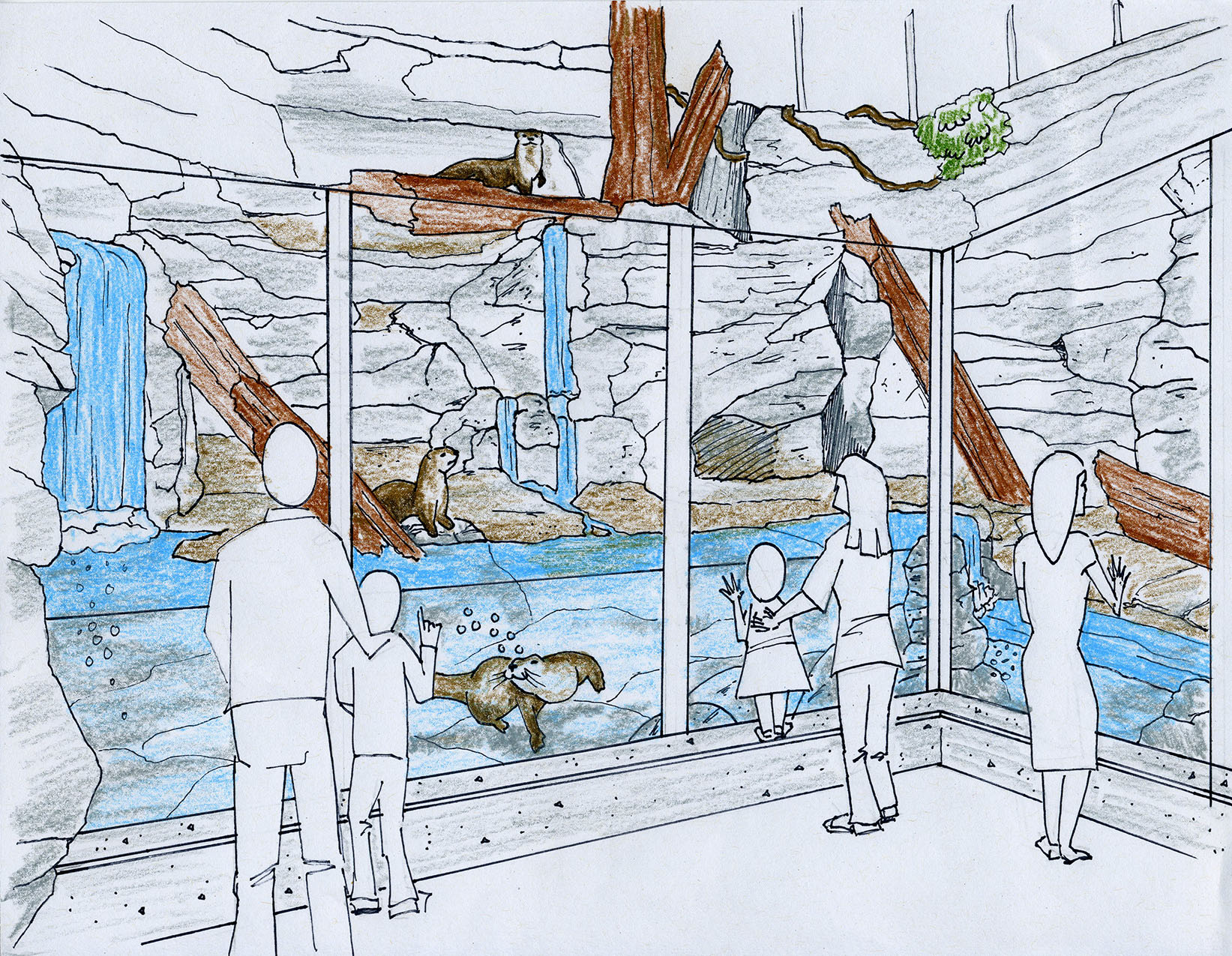OTTER EXHIBIT EXPANSION• The exhibit is scheduled to open in April 2014.• It will cost $1.5 million.• The number of otters will increase from two to six.• The new exhibit will have several levels of land for the otters to explore, as well as a long pool with two waterfalls, with the ability to increase or decrease the water flow to create new experiences for the otters.• Exhibit space for otters increases from 481 square feet to 1465 square feet• Exhibit space for guests increases from 180 square feet to 420 square feet(For comparison, Penguins' Rock has 405 square feet for guests)• Acrylic viewing space increases from 13 linear feet to 32 linear feet• Backup space for otter care increases from 100 square feet to 406 square feetSource: Tennessee Aquarium
It sounds like an episode of "While You Were Out," but while Delmar and Pete, the Tennessee Aquarium otters that have delighted visitors for almost eight years, are on vacation meeting new friends, their home at the aquarium is getting a makeover.
The Tennessee Aquarium will be introducing four new otters to its popular Cove Forest exhibit in the spring, in addition to almost tripling the viewing space for guests and living space for the animals, according to spokesman Thom Benson.
"We're calling it three times the otters and three times the view," Benson said.
Delmar and Pete are being introduced to new otters at a private rehabilitation facility. The six will be returned to the facility in late February or March.
Curator of Forests Dave Collins said the introduction process is tricky and involved.
Each otter will be introduced to the others individually and in stages.
They'll first be in separate pools with a solid wall between them. Through their exceptional senses of smell, they will know a new otter is nearby.
Once they acclimate to the idea of a new otter, the solid wall will be replaced with a clear wall so they can see each other. If that goes well, a mesh wall will separate the two and eventually they will be allowed to meet in a third, "neutral" pool to avoid territorial issues.
Otters leave scent markings everywhere they go, Collins said, so each time a new set of otters enters the space, they will spend time exploring where the previous set went.
Aquarium personnel also will be able to place items, including food, around the exhibit, and feeding tubes will be placed throughout to encourage foraging.
"This way they are not being fed at the same time from the same place," Collins said.
This process hopefully will keep the otters active, he said.
While the old exhibit allowed viewing primarily from above, the new exhibit will allow viewers to look directly into the pool, with the edge being at about eye level. Collins says the hope is that the increased number of animals will allow his staff to have active otters on exhibit more often.
How that works out is entirely dependent on how well the otters get along with each other. Collins said ideally all six will become fast friends, but it's possible they won't. All six are males, because introducing a female into the mix creates a whole set of new issues, Collins said.
Otters seem content to live as bachelors both in captivity and in the wild, he said.
Collins said ultimately the aquarium would like to develop a breeding facility, but for now it will "target a group of males that will provide a good experience for the guests."
Contact staff writer Barry Courter at 423-757-6354 or bcourter@timesfreepress.com.

